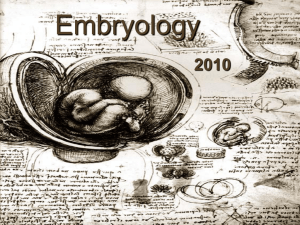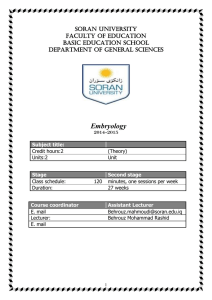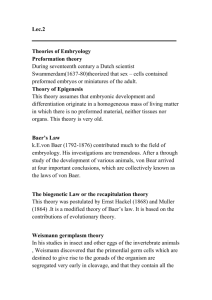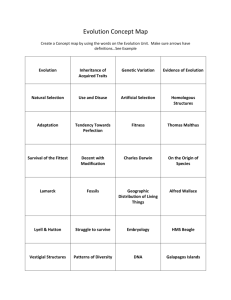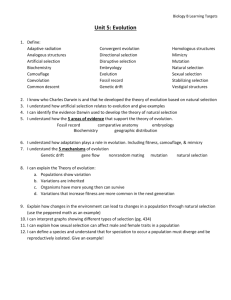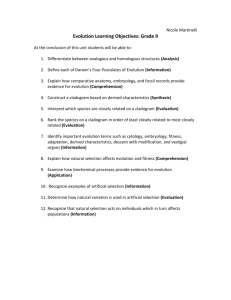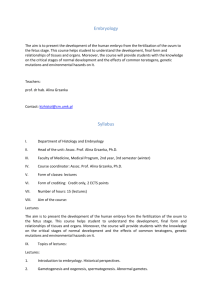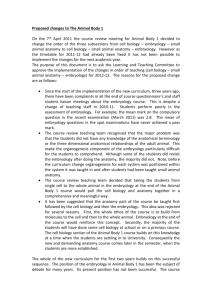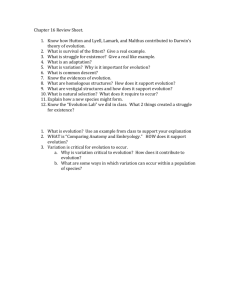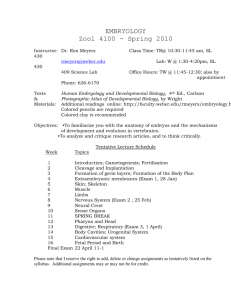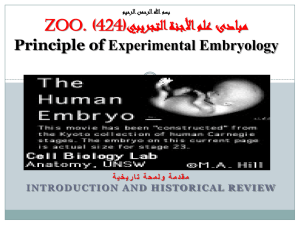Experimental Embryology
advertisement
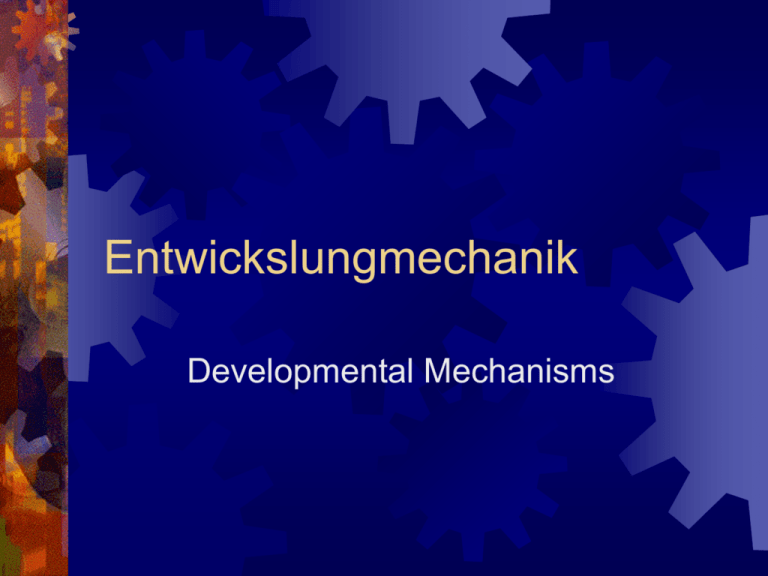
Entwickslungmechanik Developmental Mechanisms Wilhelm Roux: “We must not hide from ourselves the fact that the causal investigation of organisms is one of the most difficult, if not the most difficult, problem which the human intellect has attempted to solve… since every new cause ascertained only gives rise to fresh questions regarding the cause of this cause.” Experimental Embryology Mechanics of Cell Specification Mechanics of Morphogenesis Experimental Embryology Experimental embryology had its beginnings in the testing of hypotheses of cell specification Experimental Embryology August Weismann’s Germ Plasm Theory 1883 First testable hypothesis of cell specification Determinants within zygote were partitioned into cells as development proceeded Experimental Embryology Weismann’s Hypothesis Determined Cells Differentiated Cells Experimental Embryology Weismann hypothesis Egg and sperm provide equal chromosomal contributions to embryo Chromosomes carried the inherited determinants The chromosomes/determinants were somehow differentially distributed to embryonic cells Only the germ cells received all determinants (germ plasm) Experimental Embryology Testing Weismann’s Hypothesis Each half of a developing frog embryo is derived from one cell of the two cell staged embryo Each blastomere are the two cell stage must therefore contain left and right determinants Experimental Embryology 4 Categories of Experiments Defect experiment Isolation experiment Recombination experiment Transplantation experiment Experimental Embryology Wilhelm Roux (1888) 1st to test Weismann’s hypothesis. Roux’s defect experiment supported mosaic development and partitioning of determinants. Experimental Embryology Hans Driesch’s (1892) Isolation Experiment: Dissociation of 4 and 8 cell sea urchin embryos demonstrated regulative development. Dissociation was accomplished by incubation in Ca free water implies that Ca is important for cell adhesion Experimental Embryology Roux’s experiment suffered from an experimental design flaw By killing one of the two blastomeres, but not removing it, the remaining dead cell prevented rearrangement of the living cells to produce a normal embryo Driesch’s experiment did not suffer from this flaw since he had separated all the cells of the embryo McClendon (1910) repeated Driesch’s experiment in frogs with the same result Experimental Embryology Major Impact for Embryology In regulative development, the prospective potency is greater than the prospective fate
